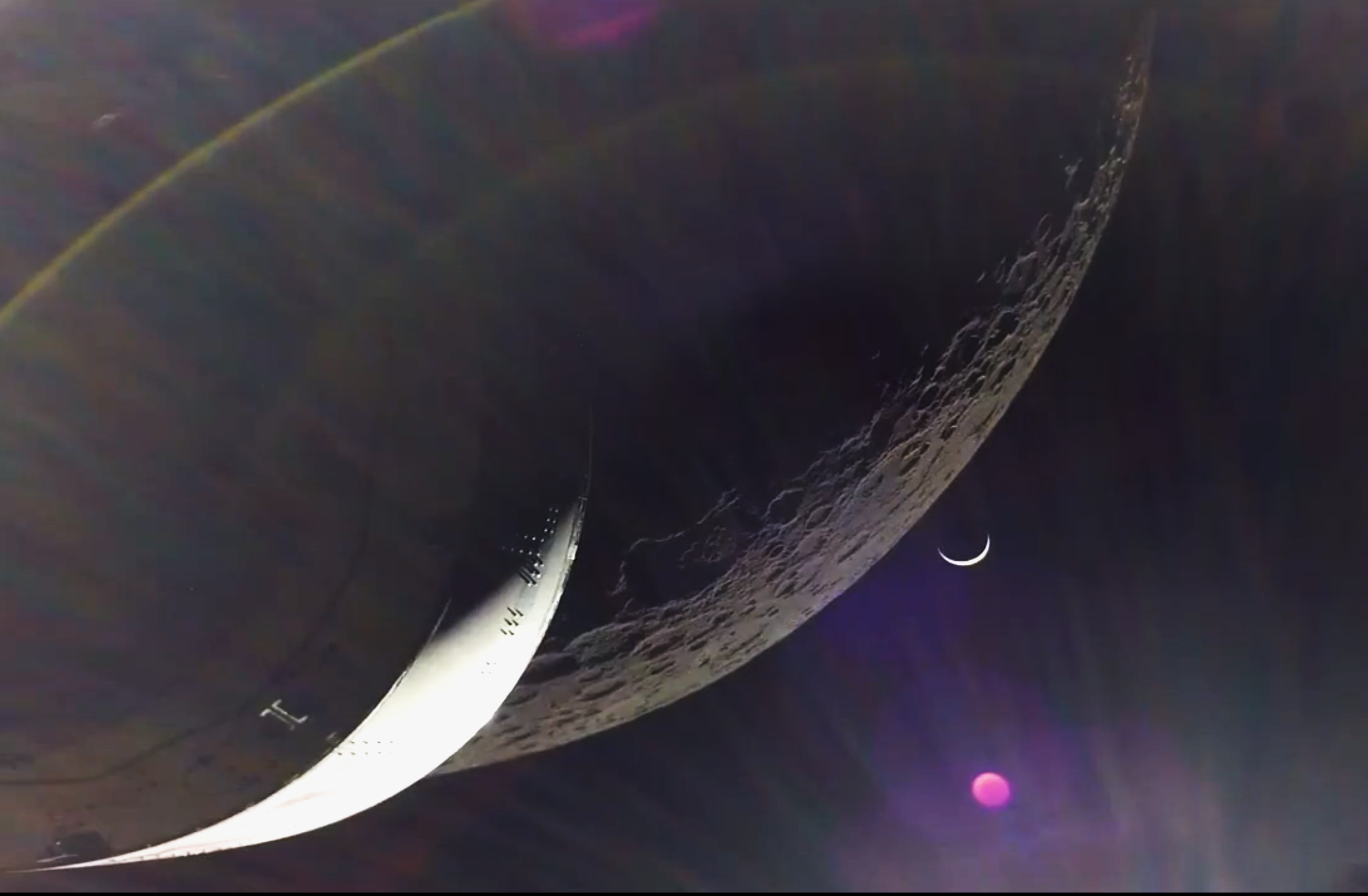
For SpaceUpClose.com & RocketSTEM
CAPE CANAVERAL, FL – NASA’s Orion Artemis 1 spacecraft snapped a series of staggeringly beautiful selfie views with the cratered lunar surface and the crescent Earth rising against an eerie backdrop of the blackness of space as it conducted the critical return flyby powered (RPF) maneuver Monday, Dec. 5 – that irreversibly committed the capsule to departing lunar orbit and a return to the Home Planet after completing a final close flyby of the Moon and finishing the final major burn of the unprecedented test flight.
Simultaneously it whet our appetites with a spectacular astronauts eye view of whats in store the next time Orion flies with a crew of four on the Artemis 2 mission slated for liftoff by late 2024.
Orion harnessed the Moon’s gravity significantly bending its trajectory for a slingshot maneuver back to Earth at a distance of a quarter of a million miles on Flight Day 20 of the 26-day unpiloted Artemis 1 mission.
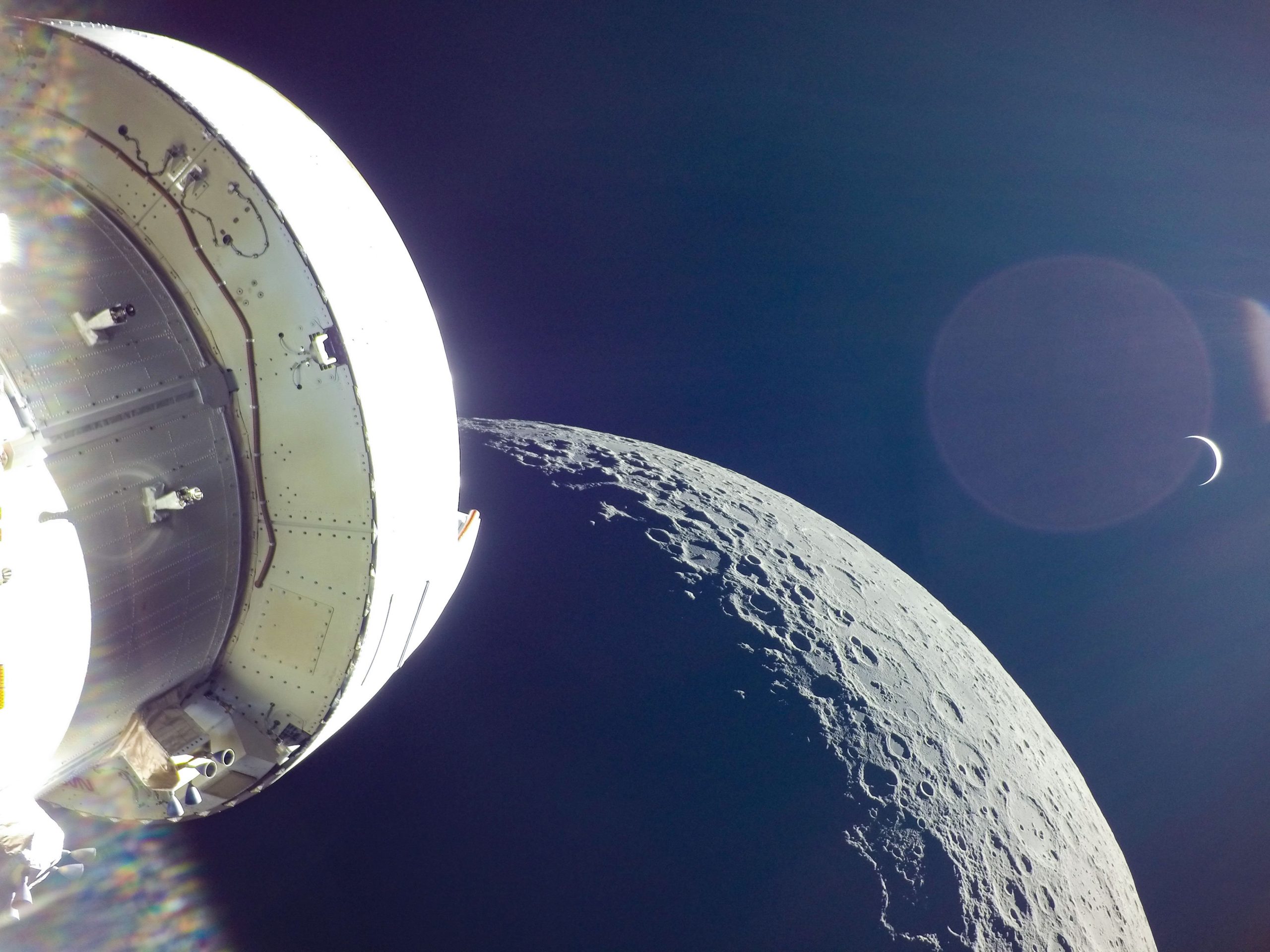
The spacecraft made its second and final close approach to the Moon at 11:43 a.m. EST Monday, Dec. 5, just before its return powered flyby burn, passing 80.6 miles (129 km) above the lunar surface.
The burn, which used the spacecraft’s main engine on the European-built service module, lasted 3 minutes, 27 seconds, and changed the velocity of the spacecraft by about 655 mph (961 feet per second).
The 207 second long RPF burn also counted as the longest and last of the five firings performed by Orion’s Orbital Maneuvering System (OMS) main engine.
Last fly-by complete! We’re coming home!@NASA_Orion flew about 79 miles above the lunar surface today, and returned this spectacular view. The spacecraft is now on a course for Earth and will splashdown on Dec. 11. Follow along: https://t.co/8WV8GliitY pic.twitter.com/MOIcwlCITE
— Jim Free (@JimFree) December 5, 2022
Orion has unveiled the Earth-Moon system as never before
All 8 Billion humans are here together as one folk!
The awesome imagery was captured by a camera mounted on Orion’s solar arrays.
One step closer to home 🌎
On Dec. 5 at 11:42 am EST, @NASA_Orion completed its return powered flyby of the Moon, making its way back to Earth. At its closest approach, the spacecraft was only about 80 miles away from the lunar surface. #Artemis pic.twitter.com/0bWmyRGjlI
— NASA's Johnson Space Center (@NASA_Johnson) December 6, 2022
The OMS main engine is attached to the base of the European Space Agency-built Service Module and provides about 6000 pounds of thrust to slingshot Orion around the Moon.
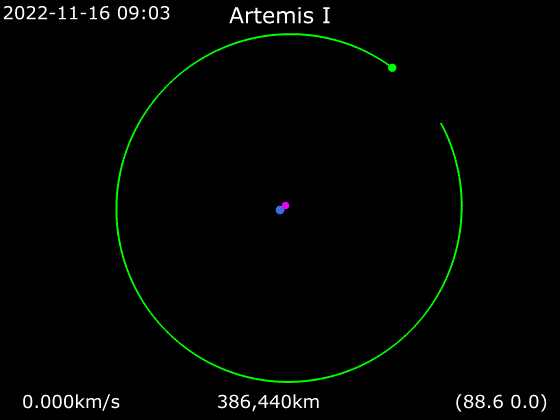
The OMS engines are recycled from the space shuttle and repurposed for Orion and built by Aerojet Rocketdyne.
This flight proven engine flying on Artemis I previously flew on 19 space shuttle flights, beginning with STS-41G in October 1984 and ending with STS-112 in October 2002.
RBF was the final major engine maneuver of Orion’s maiden flight which will conclude with a splashdown in the Pacific Ocean on Sunday morning, Dec. 11.
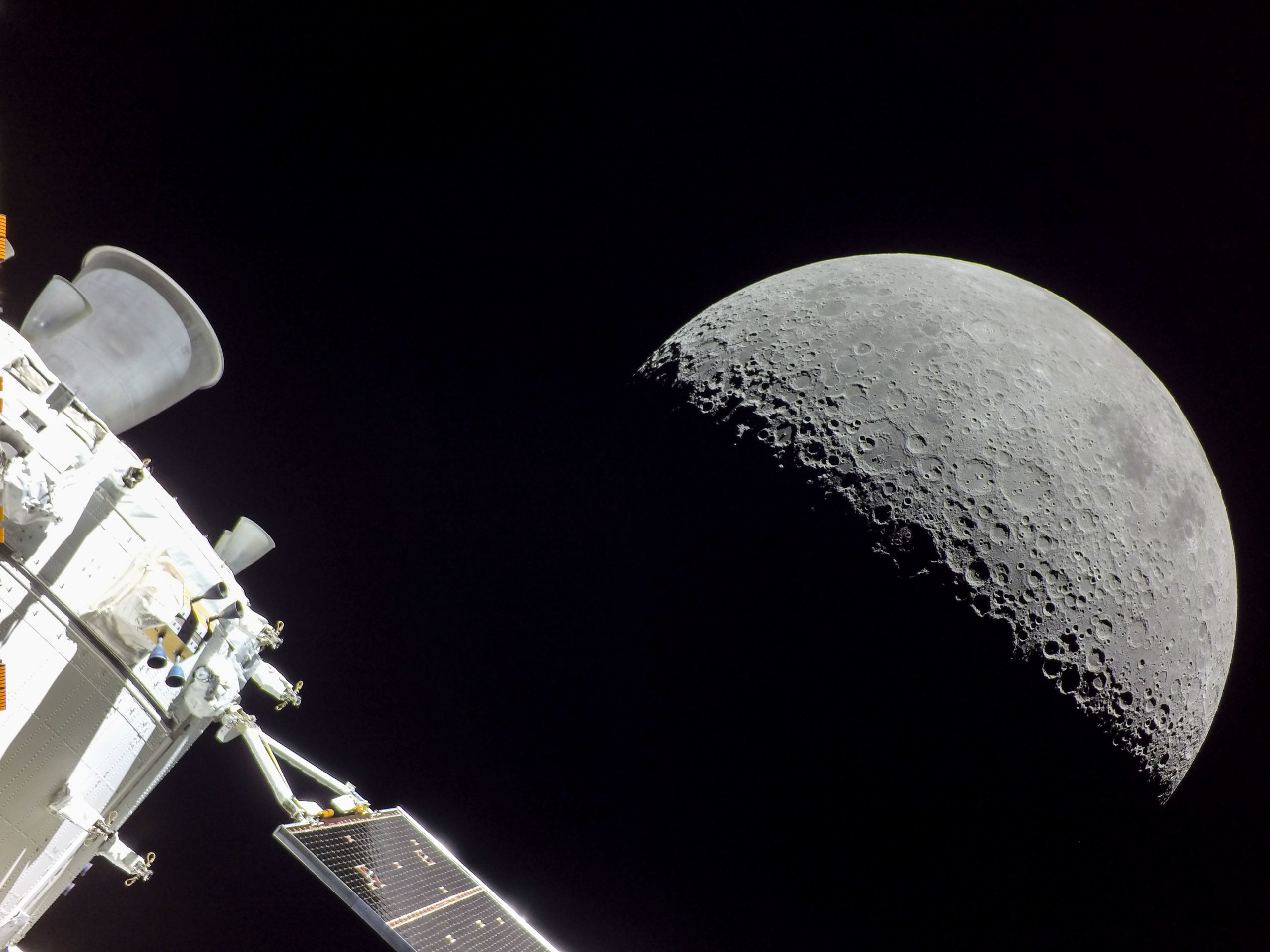
Orion’s mission will end with the ocean splashdown some 3500 mi southwest of San Deigo around 12 a.m. EST Sunday
“Orion is heading home! Today the team achieved another momentous accomplishment, flying Orion just 80 miles from the surface of the Moon. The lunar flyby enabled the spacecraft to harness the Moon’s gravity and slingshot it back toward Earth for splashdown,” said Administrator Bill Nelson.
“When Orion re-enters Earth’s atmosphere in just a few days, it will come back hotter and faster than ever before – the ultimate test before we put astronauts on board. Next up, re-entry!”
As of 6:29 p.m. EST on Dec. 5, Orion was traveling 244,629 miles from Earth and 16,581 miles from the Moon, cruising at 668 mph.
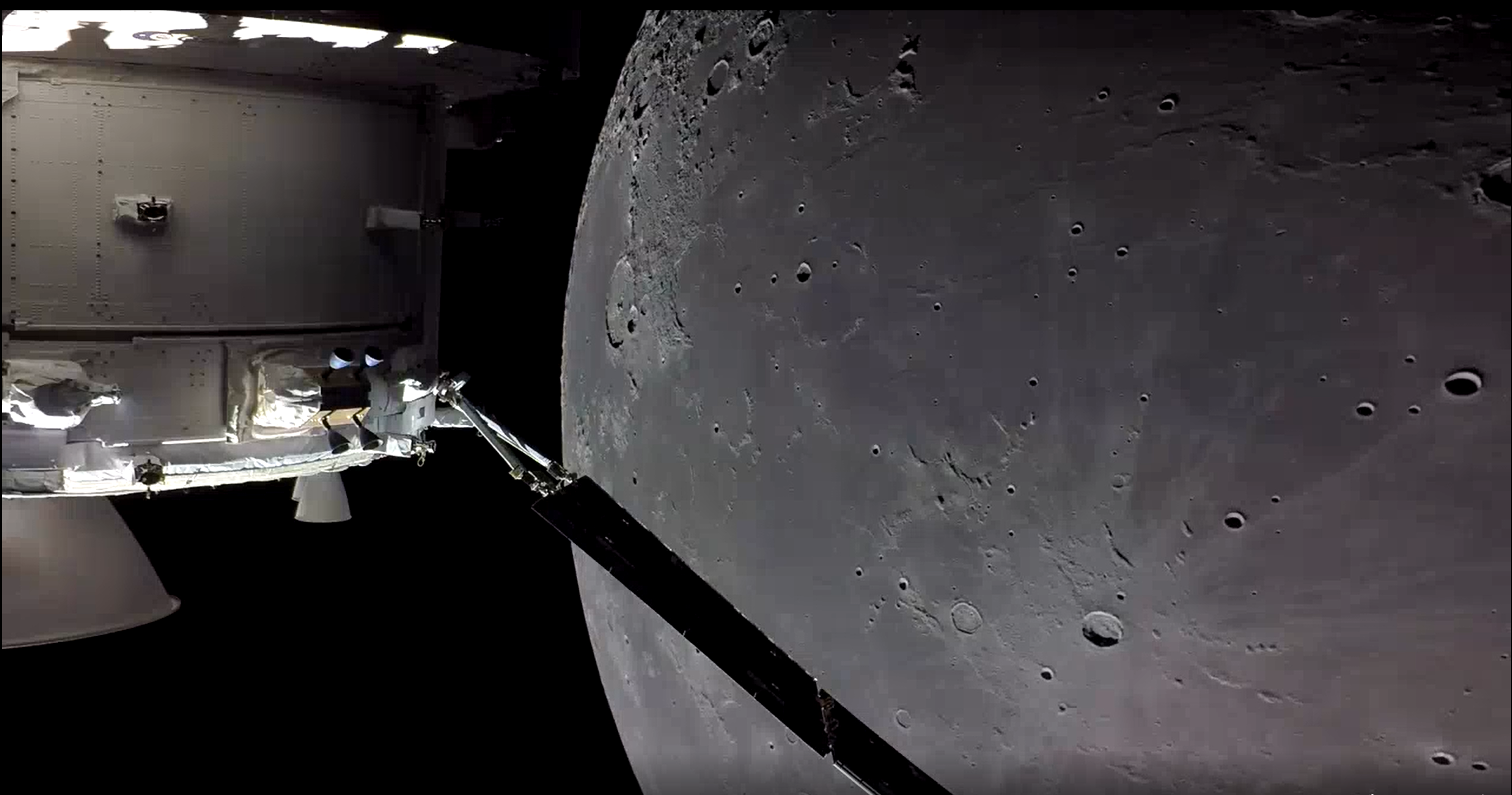
During this second and final close flyby of the Moon, the Orion spacecraft also flew over some sunlit portions of the Moons nearside. It flew some 6,000 miles (10,000 kilometers) overhead several Apollo landing sites including Apollo 12 and 14 – too far away to actually see any manmade objects.
“The part of the trajectory that is over those specific sites will be pretty far away from the moon. It’s actually about 6,000 miles above the surface when we will be passing over some of those Apollo sites. We will then dip behind the moon, and that’s where we’ll have our closest approach. That closest approach, we’ll have a loss of signal again. And that will be as Orion goes into the eclipse and darkness,” said Zeb Scoville, NASA’s deputy chief flight director, at a media briefing.
“Then we’ll pop out of the backside, and be able to be on a trajectory back towards the west coast of the U.S. off of Los Angeles, and coming into the Pacific there,” Scoville said.
Overall Orion will journey 1.4 million miles from the Nov. 16 launch to Dec. 11 splashdown.
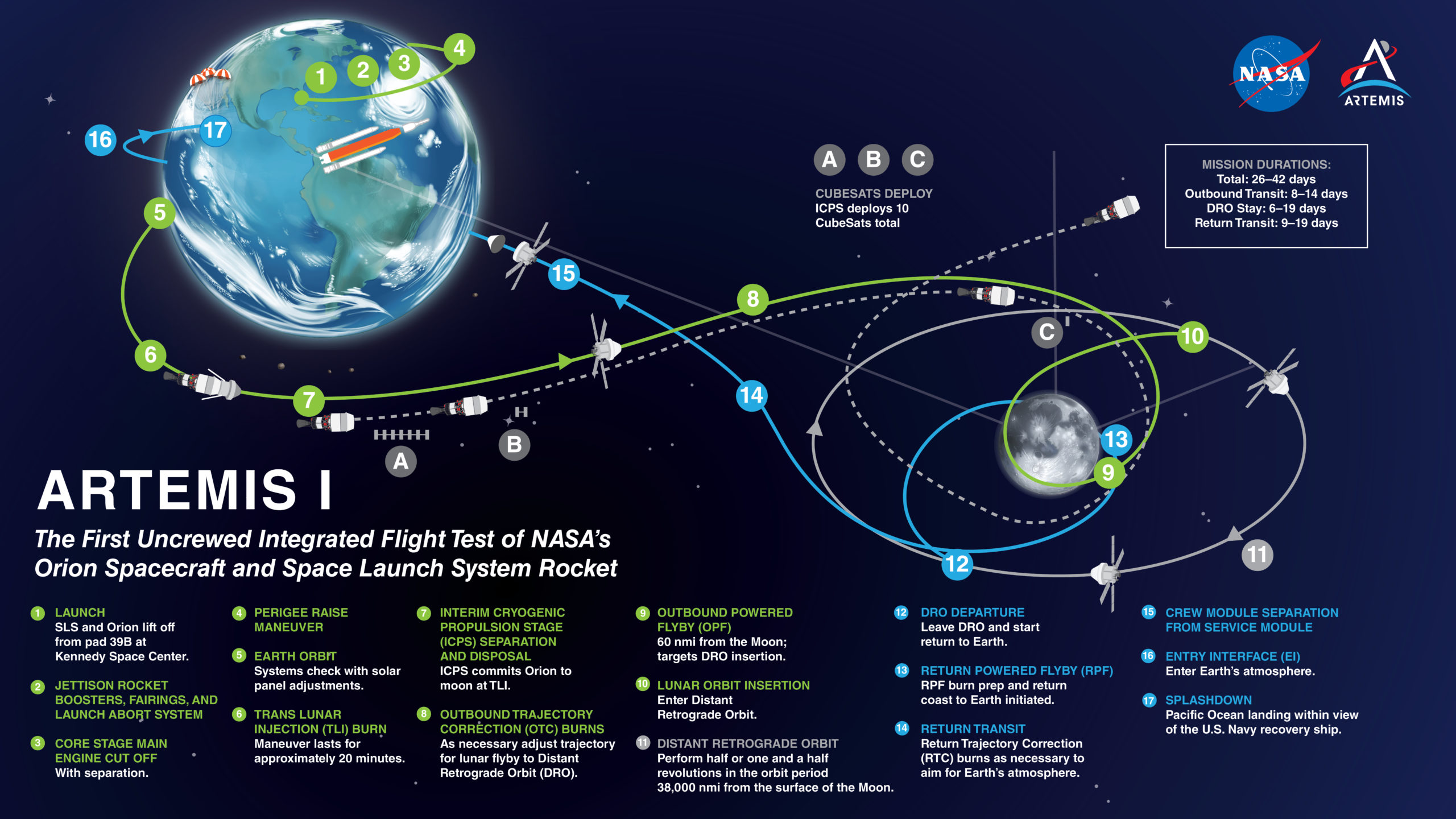
Depending on the final weather forecast NASA can target Orion to land a little long or a little short during its reentry to the best spot with the least waves and winds.
On Monday, the mission management team convened and polled “go” to deploy recovery assets off the coast of California ahead of Orion’s splashdown on Dec. 11.
“As soon as Orion splashes down, a team of divers, engineers, and technicians will depart the ship on small boats and arrive at the capsule. Once there, they will secure it and prepare to tow it into the back of the ship, known as the well deck. The divers will attach a cable to pull the spacecraft into the ship, called the winch line, and up to four additional tending lines to attach points on the spacecraft. The winch will pull Orion into a specially designed cradle inside the ship’s well deck and the other lines will control the motion of the spacecraft,” said NASA.
“Once Orion is positioned above the cradle assembly, the well deck will be drained and Orion will be secured on the cradle.”
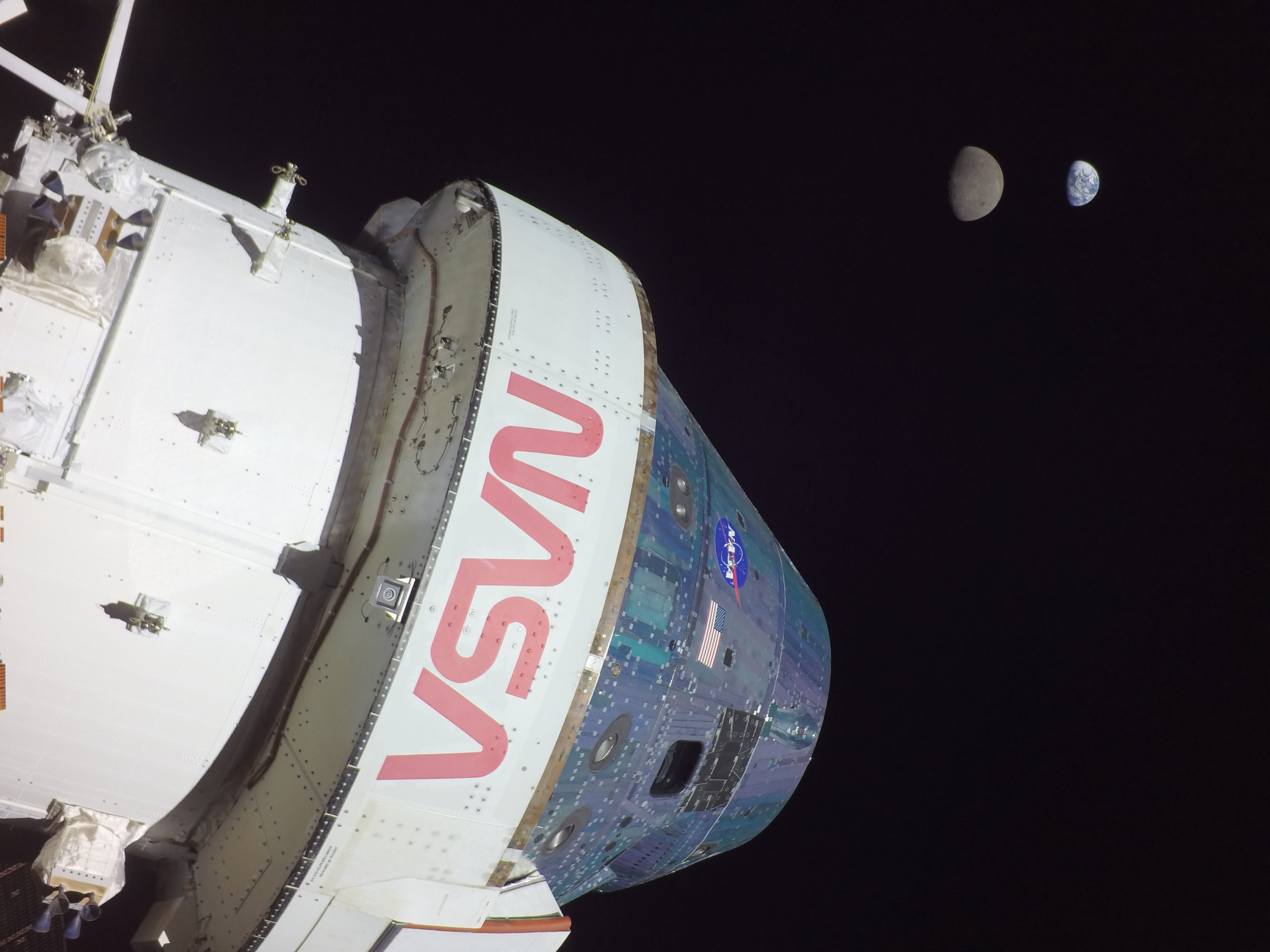
Orion will use a skip reentry technique to slow its speed as it hits the Earth atmosphere at some 25,000 mph and reaches about 5000 degree F.
Frictional drag and eventually 11 parachutes will slow Orion down to a splashdown speed of a much gentler 20 mph.
Among many firsts, Orion Artemis 1 also surpassed the previous human spaceflight distance record of 248,654 miles (397,864 km) set by the Apollo 13 crew all the way back in 1970, and finally exceeded on Saturday, Nov. 26.
Two days later on Monday, Nov. 28, Orion reached its greatest distance from Earth at over 268,500 miles (432,000 kilometers).
Orion also captured stunning up close imagery of the tortured lunar surface terrain during the unpiloted vehicles 1st close flyby orbiting around the Moon’s far side on Flight Day 6 of the test flight mission on 21 Nov. 2022.
I’ve created a trio of up close lunar mosaics from the detailed images taken by Orion by stitching together NASA black and white raw images taken by the optical navigation camera – showing the heavily cratered surface and illustrating this story.
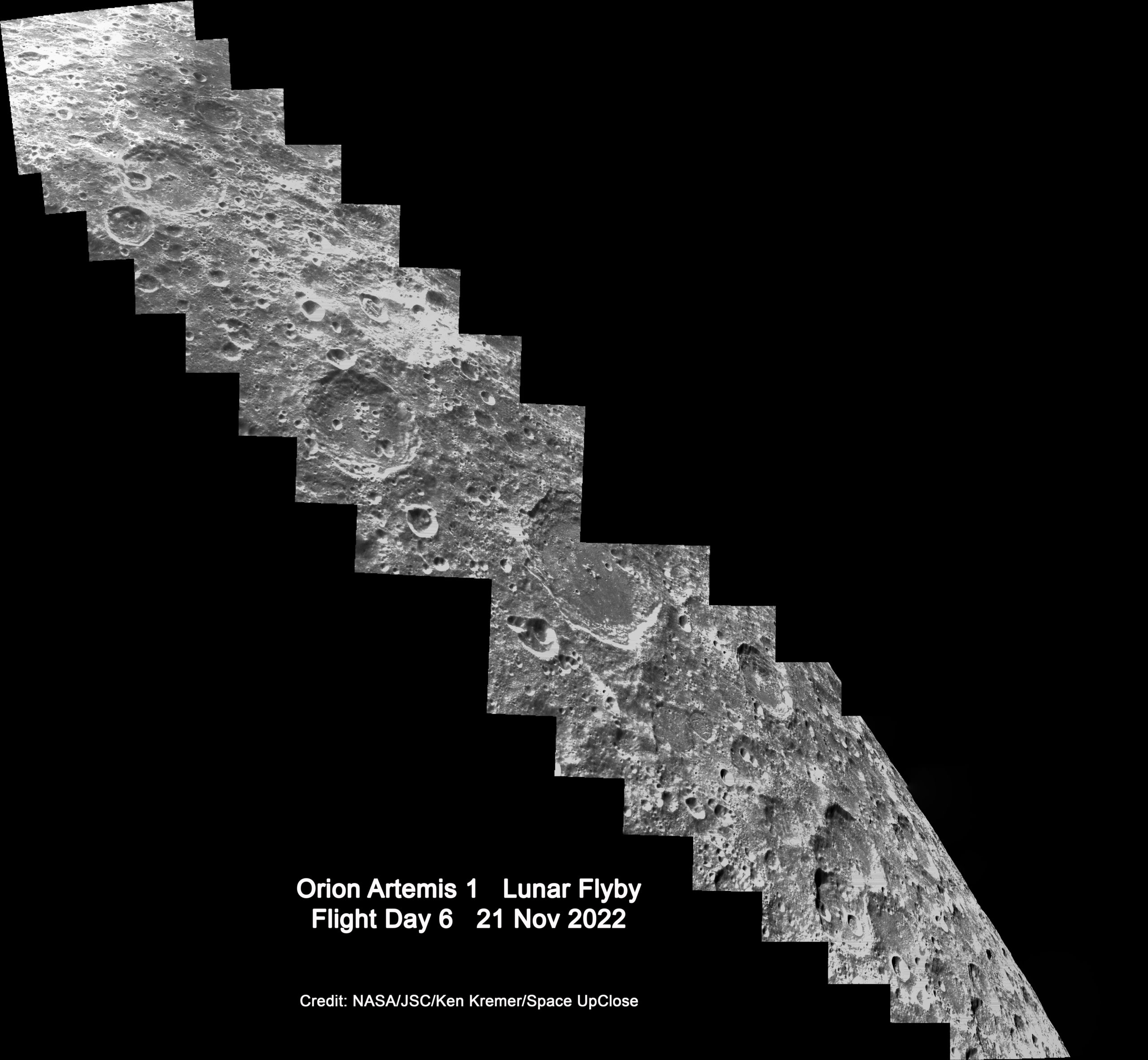
The long mosaic shows the entire ground track of the pockmarked surface of our nearest celestial neighbor as seen in 17 raw images snapped by Orion soaring over the Moon during its closest approach Nov. 21.
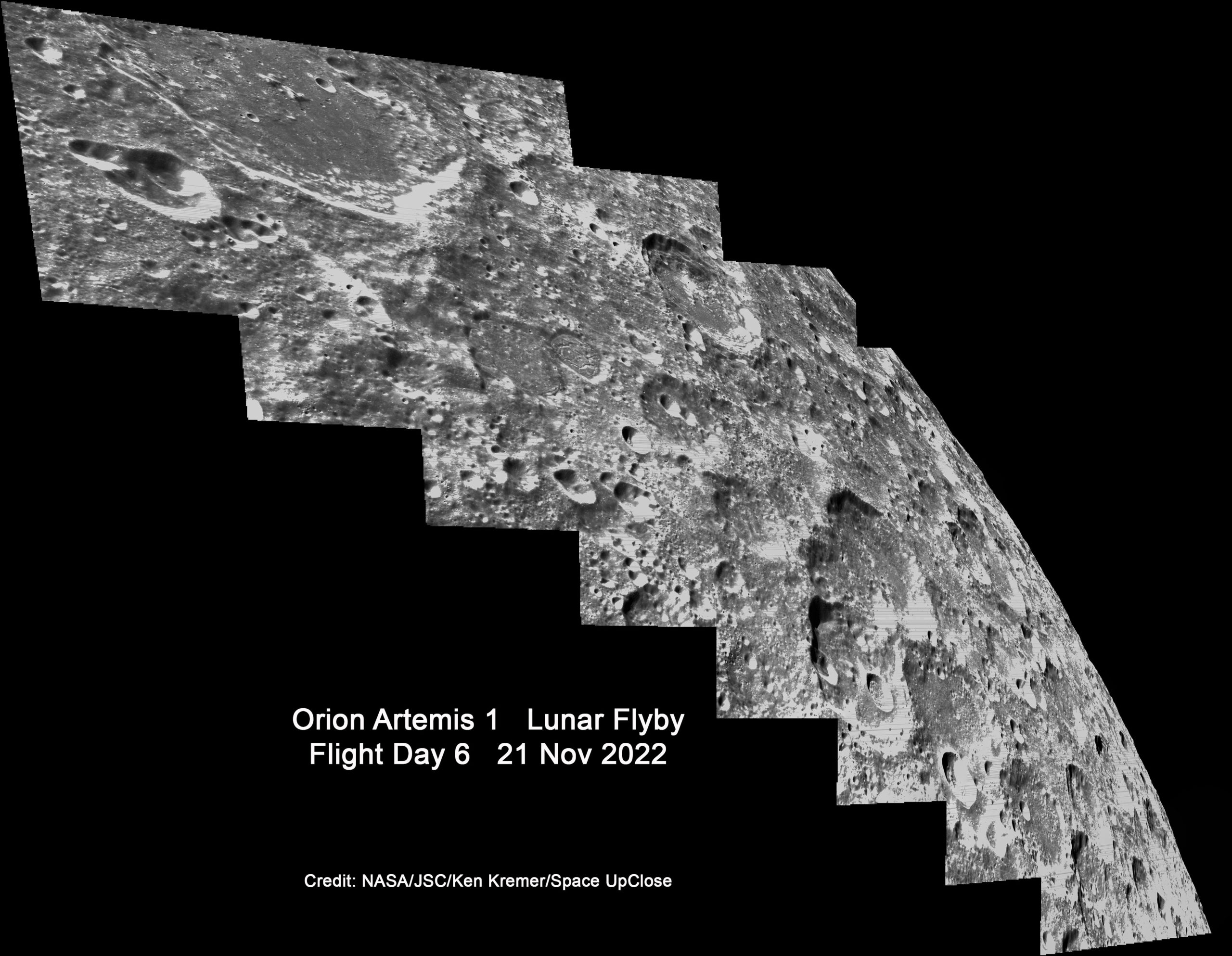
The other two mosaics show the detailed upper and lower halves individually, across out to the Moon’s limb and the blackness of space.
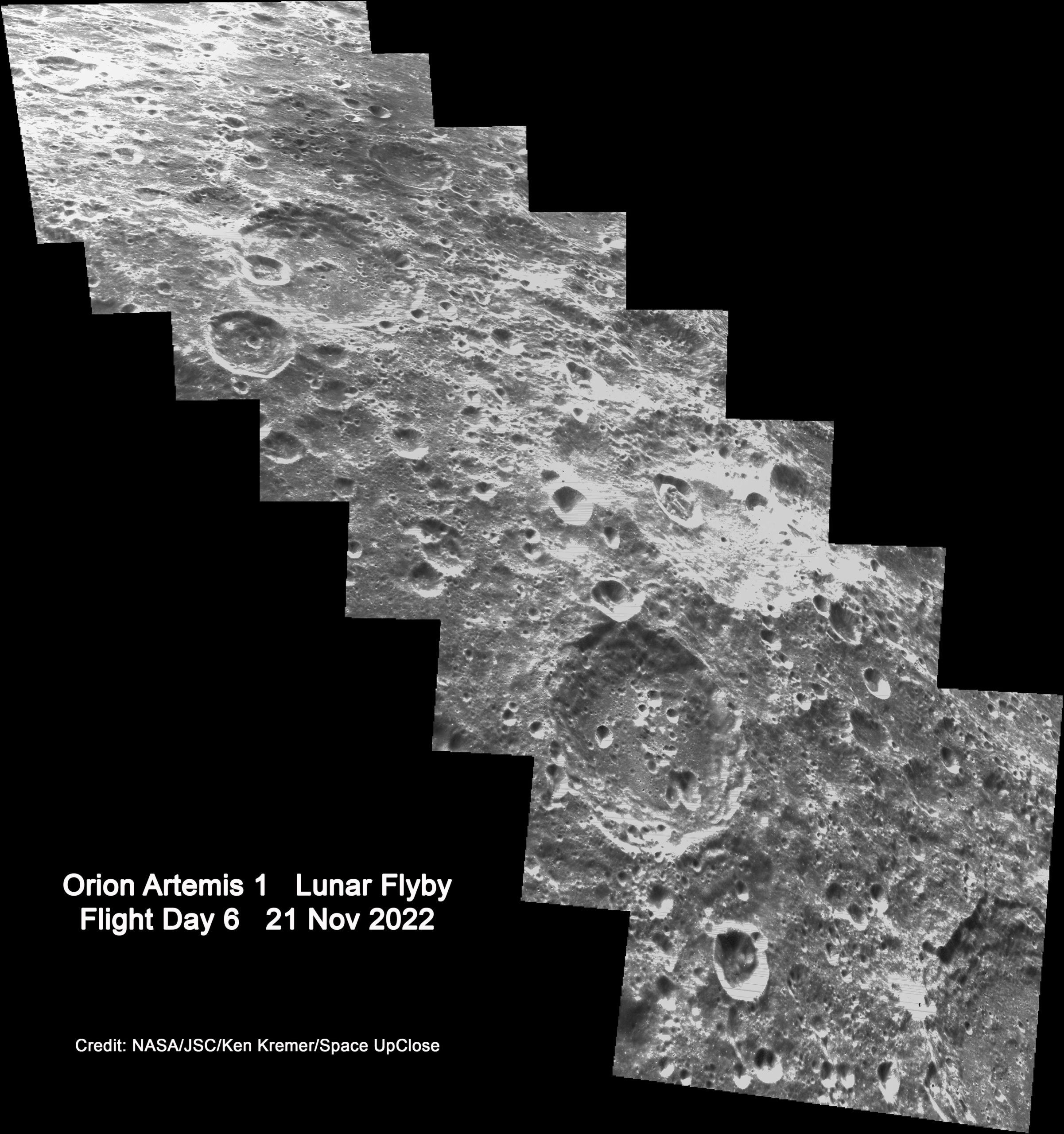
Artemis 1 is paving the way for America’s return to the Moon with astronauts on the next flight on Artemis 2 set for launch in 2024 and eventually the next lunar landing on Artemis 3 around mid-decade and no earlier than late 2025.
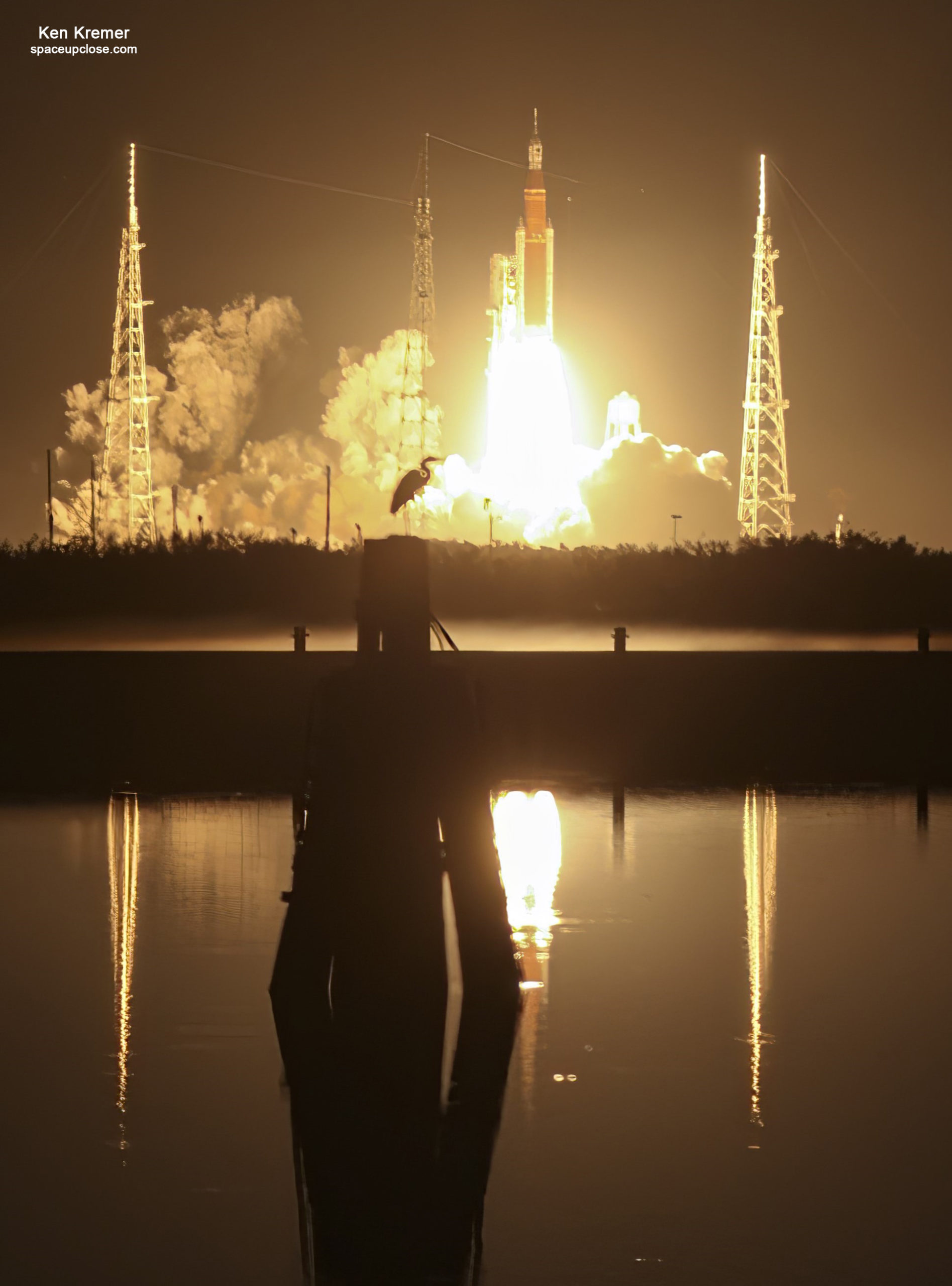
The test flight of the uncrewed Orion capsule began with the stunning debut liftoff of NASA Space Launch System (SLS) mega moon rocket on the Artemis 1 mission at 1:47 a.m. EST (0647 GMT) Wednesday, Nov. 16 from Launch Pad 39B at the Kennedy Space Center in Florida – sending America to the moon with the 1st human rated capsule in 50 years.
SLS now counts as the world’s the most powerful rocket ever built – about 15 to 20% more powerful than NASA’s Apollo Saturn V moon rocket and the Space Shuttle.
The primary objectives for the Artemis 1 mission that must be accomplished following the successful launch and delivery by the SLS moon rocket are: demonstrating Orion’s heat shield at lunar return re-entry conditions, demonstrating operations and facilities during all mission phases, and retrieving the spacecraft after splashdown.
Artemis 1 is the first integrated flight test of the agency’s deep space exploration systems: the Orion spacecraft, Space Launch System (SLS) rocket, and ground systems and the mission is a critical part of NASA’s Moon to Mars exploration strategy.
The 32-story tall Artemis 1 stack is comprised of NASA’s Space Launch System (SLS) Mega moon rocket integrated with the Orion crew spacecraft on top.
Watch Ken’s commentary about Project Artemis, SpaceX Falcon Heavy, Crew-5, NASA SLS cryo and WDR tests, NASA SpaceX Crew & Cargo Dragons and more
Nov 22: WFTV ABC News Orlando interview about upcoming NASA SpaceX CRS 26 cargo resupply mission to the ISS and science aboard + Artemis 1 launch and Orion crew capsule successfully entering lunar orbit, results and mission goals
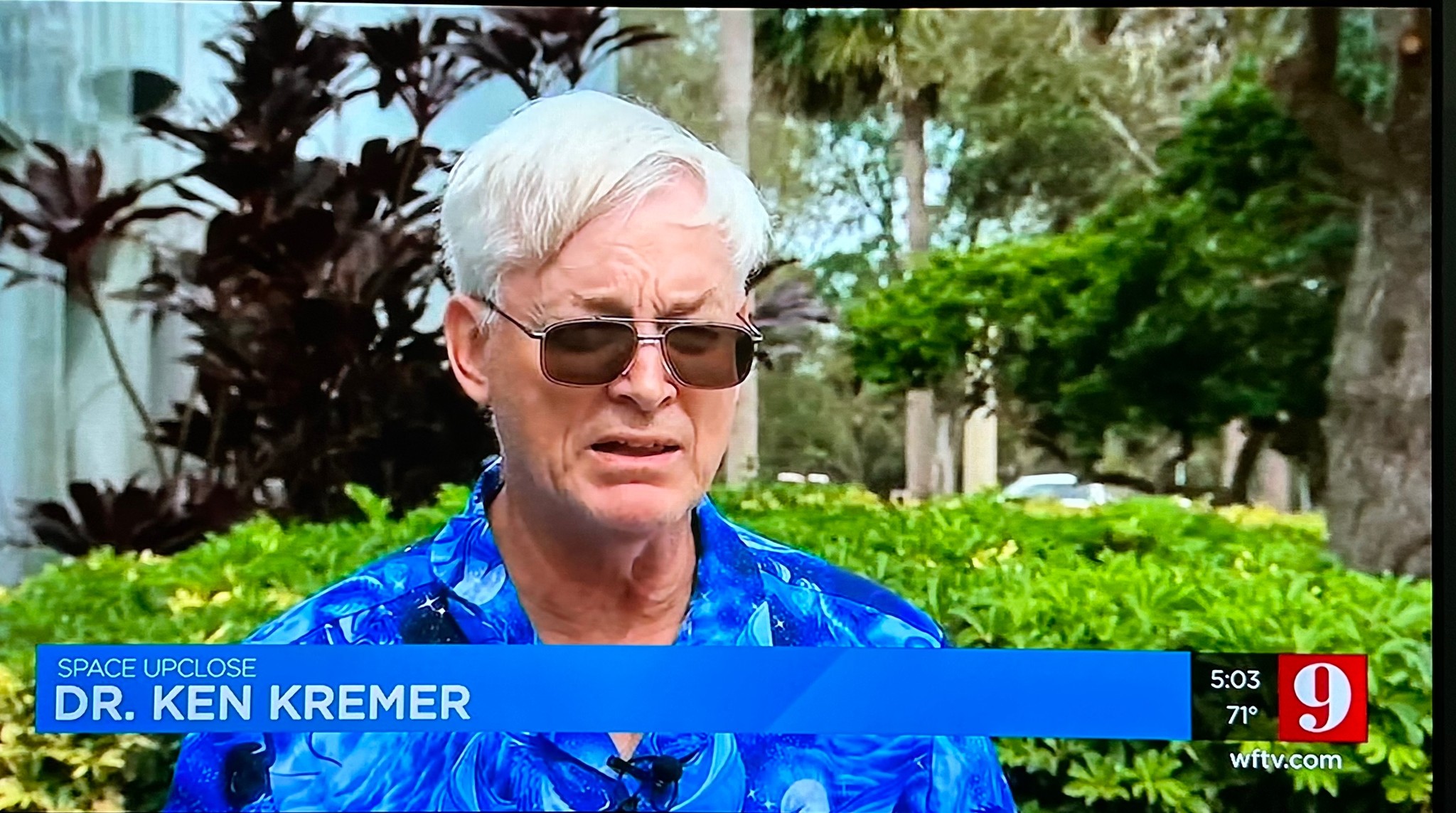
Nov 22: Fox 35 interview about upcoming NASA SpaceX CRS 26 cargo resupply mission to the ISS and science aboard + Artemis 1 launch and Orion crew capsule successfully entering lunar orbit, results and mission goals
Nov 21: BBC World TV interview about Orion crew capsule successfully entering lunar orbit, results and mission goals
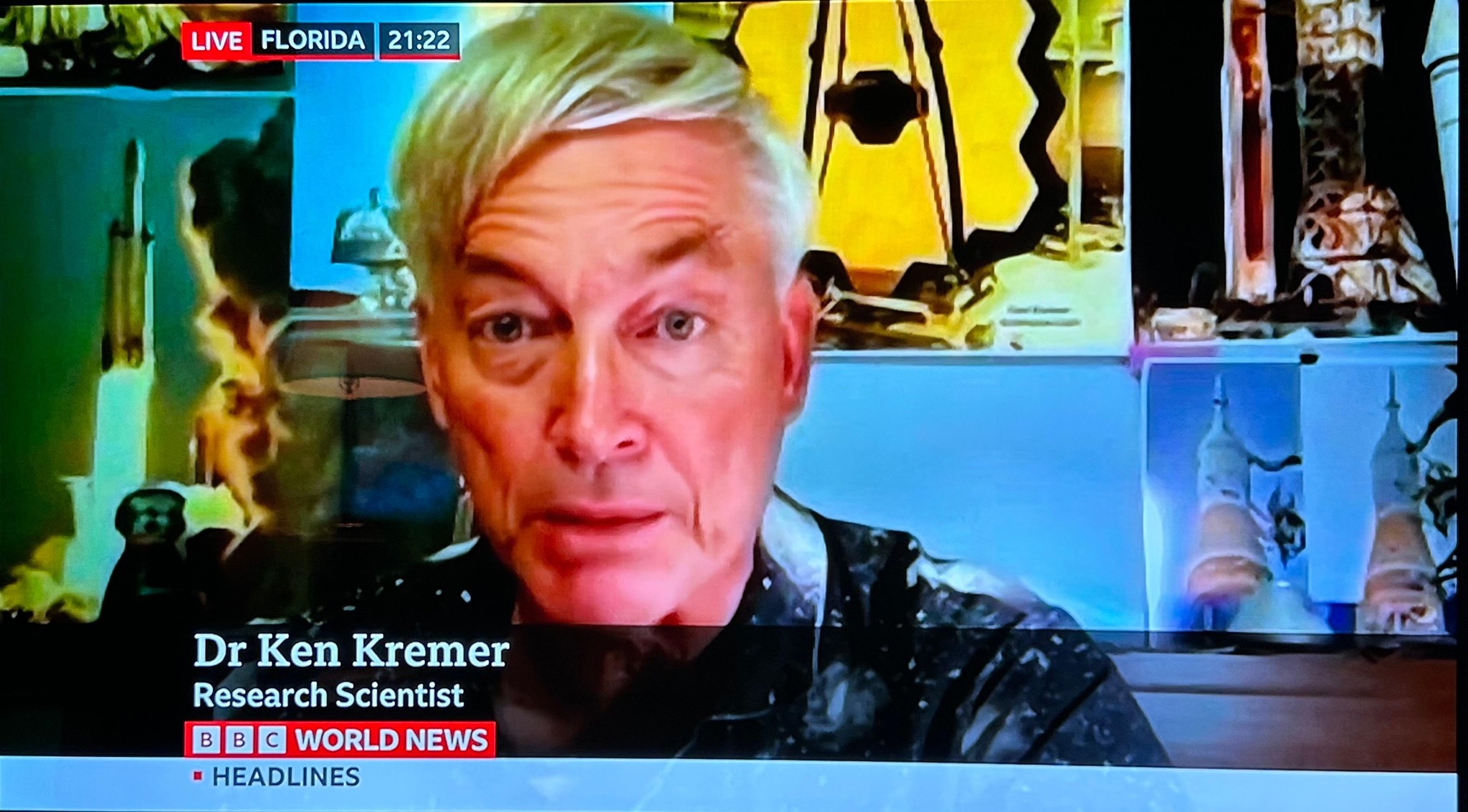
Nov 16: Fox 35 Orlando live and taped interviews about Artemis 1 launch and goals
Nov 15/16: News Nation interview about Artemis 1 launch and goals
Nov 7/8: Fox 35 Orlando – As subtropical storm Nicole approaches KSC and Florida watch my comments about NASA deciding for the moment to keep Artemis 1 moon rocket at pad 39b and not roll back to VAB
https://www.fox35orlando.com/news/nasa-says-its-keeping-artemis-outside-during-major-storm
NASA says it's keeping Artemis on the launch pad. The rocket can withstand winds up to 85 miles an hour. The @NWSMelbourne is predicting windspeeds could very well hit that point in Brevard County – in fact, a Tuesday morning update says windspeeds could be in the 74-110mph range pic.twitter.com/i569eAmi9p
— Marie Edinger FOX 35 (@MarieEdinger) November 8, 2022
Nov 4/5: WFTV ABC News Orlando featured my commentary about Artemis 1 rollout overnight and goals of NASA lunar test flight mission launching Nov 14 at 1207 AM
Nov 4: Fox 35 Orlando featured my commentary about Artemis 1 rollout overnight and goals of NASA lunar test flight mission launching Nov 14
Nov 1: Fox 35 Good Day Orlando morning show featured my live and taped prelaunch interview commentary about SpaceX Falcon Heavy launch with Space Force national security payloads
Nov 1: WFTV ABC News featured my commentary about SpaceX Falcon Heavy launch with Space Force national security payloads
https://news.yahoo.com/watch-lve-spacex-launches-falcon-100341265.html
Oct 31: WFTV ABC News featured my commentary about SpaceX Falcon Heavy launch with Space Force national security payloads
Oct 27: WFTV ABC News and Fox 35 Orlando featured my commentary about Falcon Heavy and the Space Force national security payloads
https://www.fox35orlando.com/video/1137117
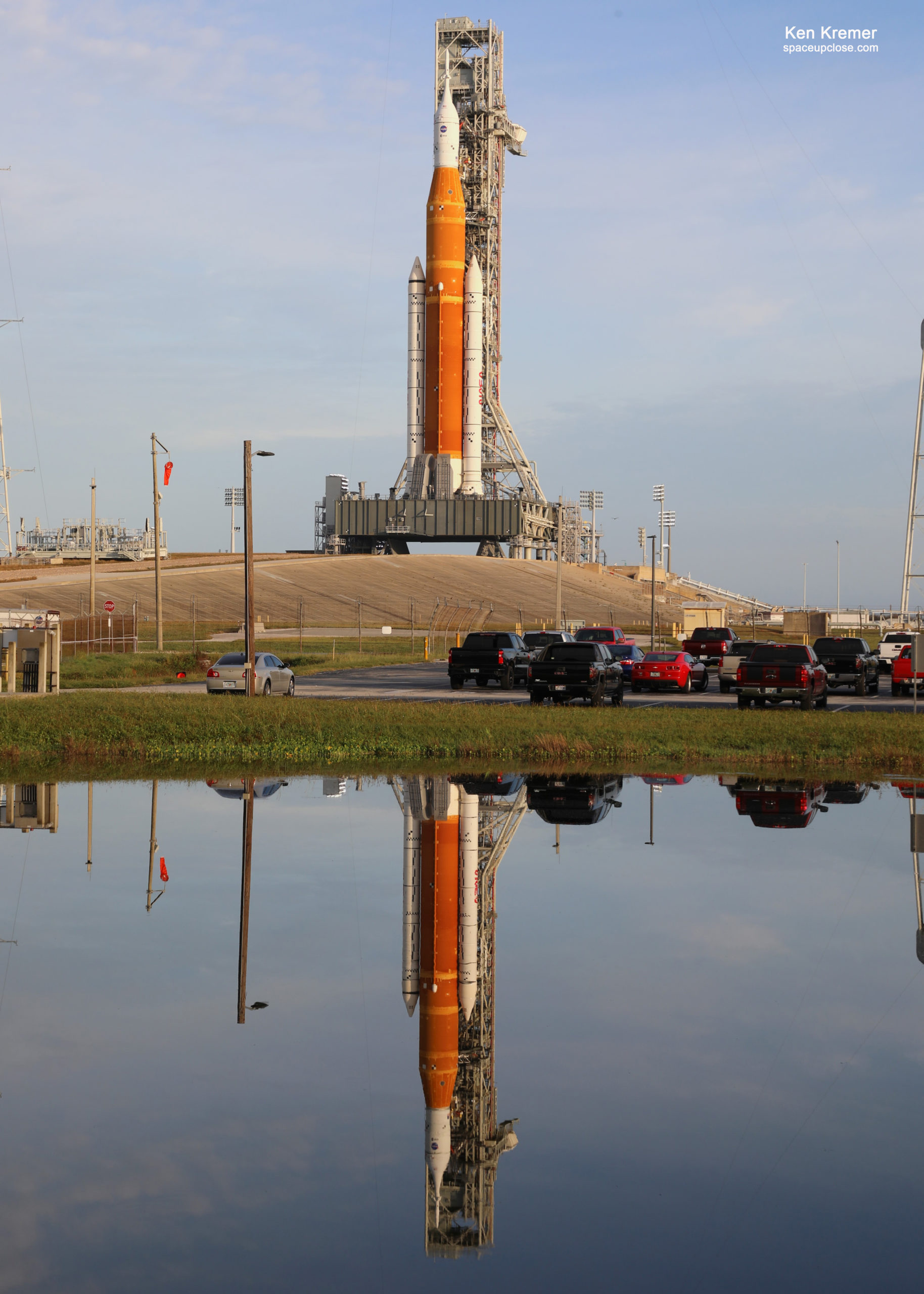
Watch Ken’s continuing reports about Artemis, SpaceX missions, SLS, Orion and NASA missions, SpaceX Crew and Cargo Dragons, SpaceX Axiom, JWST, DART, Lucy Asteroid mission, GOES, SpaceX Starlink, Commercial Crew and Starliner and Crew Dragon, Blue Origin and Space Tourism, and onsite for live reporting of upcoming and recent SpaceX and ULA launches including Crew 1 & 2 & 3 & 4 & 5, ISS, Solar Orbiter, Mars 2020 Perseverance and Curiosity rovers, NRO spysats and national security missions and more at the Kennedy Space Center and Cape Canaveral Space Force Station.
Stay tuned here for Ken’s continuing Earth and Planetary science and human spaceflight news: www.spaceupclose.com – twitter @ken_kremer – email: ken at kenkremer.com
Dr. Kremer is a research scientist and journalist based in the KSC area, active in outreach and interviewed regularly on TV and radio about space topics.
………….
Ken’s photos are for sale and he is available for lectures and outreach events
Please consider supporting Ken’s work by purchasing his photos and/or donating at Patreon
https://www.patreon.com/kenkremer
Upcoming and recent space events and talks by Ken Kremer & Jean Wright
Nov 29 at UCF, Orlando Florida: Presentation by Jean Wright – “Sew Sister to the Stars- How the Humble Art of Sewing Transformed the World of Flight”
Nov 25/29 and Dec 7 from 7 to 9 PM Quality Inn, Titusville, FL: Join Ken and Jean for Artemis 1, Falcon Heavy and space mission and rocket launch outreach. Ask us anything. plus display our photos and space apparel items for sale
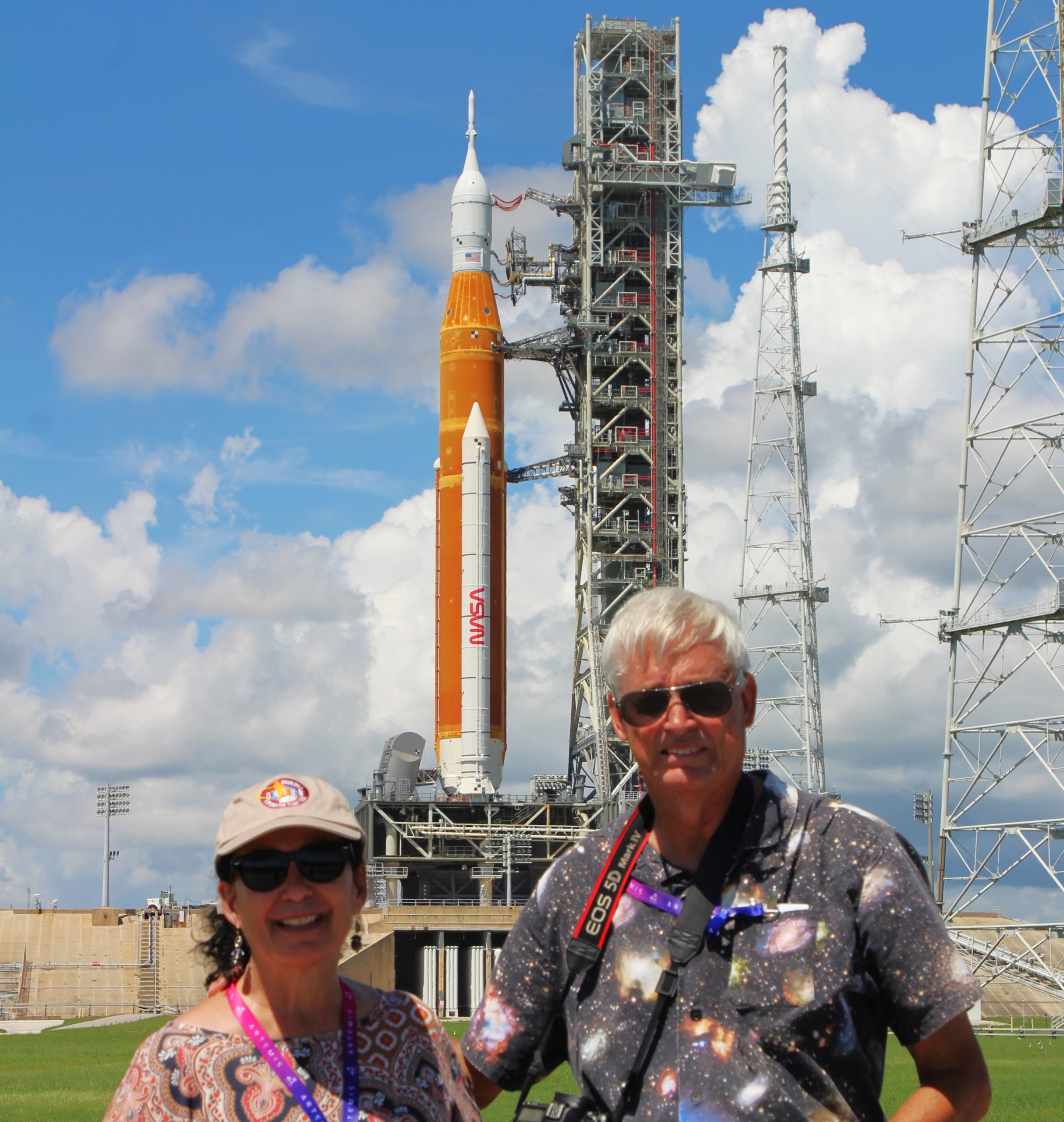
x



